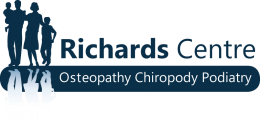What is the Role of Osteopathy in treating Asthma?
There has been a tremendous increase in the number of Asthma sufferers over the past two decades. Asthma is very common but is a debilitating condition that affects people of all ages. It is a respiratory disease where bronchial constriction occurs by the hyperactivity of the tracheobronchial tree. Inflammation of bronchioles occurs, which causes reversible and recurrent airway constriction and extra mucus secretion too. Several aggravating factors contribute to Asthma. When they got exposed to these aggravating factors, narrowing of airways occurs (lungs have sensitive airways), which causes difficulty to breathe, as a result of which they make use of ribcage muscles and neck and upper back for breathing process. Asthma sufferers usually hunch up with chin on chest -when having an Asthma attack to enable airflow.
There is a lot of new improvement in the management of Asthma, as proper knowledge regarding the pathophysiology and medications to treat asthma is known, but still, Asthma continues to be a challenge to clinical medicine and remains a complex problem. Osteopathic treatment can help Asthma sufferers to lead a normal life with more efficient breathing cycles. Osteopathy always emphasizes that the structural and functional framework of the body are interrelated and thereby, aims to keep a balance. Through the Osteopathic approach, an increase in mobility of the thoracic spine and thoracic cage is achieved, causing full expansion of lungs and ribcage, relaxation of chest wall and airways that improve the respiratory cycle.
Asthma Types
Two types:
- Allergic Asthma -when inhalation of certain allergens or external substances (pollen, dust, etc)
- Non-allergic asthma -triggers include certain medications, physical exertion, environmental conditions (cool and damp places), stress, fatigue, etc.
Asthma Triggering Factors
- Stress
- Dust
- Mites
- Environmental factors
Asthma Symptoms
- Difficulty in breathing
- Wheezing
- Tightness of chest
- Restriction in chest movement
- Vomiting
- Coughing
- Shaking
Narrowing of airways produces a noise when air passing through called as Wheezing sound. On severe attacks of Asthma, in addition to diaphragm, neck, ribs, and other additional abdominal muscles are engaged in breathing mechanism, as a result of which more energy is consumed, breathlessness occurs and ultimately lead to exhaustion.
How Osteopathy Helps In The Management Of Asthma
As with osteopathic treatment, we, at Richard’s Osteopathy focus mainly on:
- increasing the vital capacity of the rib cage through rib cage loosening and increasing its mobility, thereby providing adjustments for maximizing the mechanics of breathing.
- The diaphragmatic function is always improved by reducing the tension in the muscle, which is the major muscle that supports breathing.
- The muscle tone of the neck, shoulder, upper back, and upper chest are reduced.
- Reduce hyperventilation -by clearing the airway, improving lymphatic drainage, and enhancing the immune function by providing the nervous system rebalance (which controls the width of the airway and the amount of mucus within).
Good knowledge and understanding regarding Asthma and its effects are very essential. The impact Asthma creates on your body by its action on your nervous as well as a musculoskeletal system along with an alteration in shape is very important. It would help you deal with the condition more efficiently, getting enormous benefits with the help of an expert Osteopath through postural advice, breathing techniques, and exercises. Discussions regarding nutrition and environmental factors that contribute to asthmatic attacks are also made in respective sessions of treatment, but never interfering with the medications you take on consultation with your specialist but decreases the long-term dependence on medications.
Through Osteopathic treatment sessions, you would be able to cope with the situation, by reducing restrictions on breathing and improving the breathing capacity. Asthmatic patients usually involve their upper chest in the breathing process, rather than the whole chest, as a result of which they follow rapid breathing patterns. They usually use the additional respiratory muscles of the neck to make the breathing process easier (rounding of shoulders is very common), which puts abnormal muscle tensions. Osteopathic sessions enable you to develop a more effective breathing pattern, and an improvement in lung capacity, involving the lower chest and diaphragm by causing an encouragement in the movement of the upper back as well as ribcage by allowing the chest cavity to expand, shoulders to come back. Thus, the breathing mechanism could be advanced, involving the ribs, diaphragm, spine, and all other additional muscles of breathing. Also, fluid and blood supply to the lungs and bronchi is enhanced. Prevention is also given equal emphasis in Osteopathy.
Our expert Osteopaths help the asthma sufferers by their gentle approach to the body, its structure, thereby improve the breathing mechanism by:
- Providing relaxation to respiratory muscles
- Removing the restrictions of ribs and chest
- Enhances blood supply to the chest
- Improves the lymphatic drainage
Richard’s Osteopathy Asthma management -Other areas of concern
- Exercise programmes -breathing exercises are given more emphasis that improves the lung capacity and rib, spinal, and chest movement.
- Advice on diet
- First-aid measures to be done on an attack
- Guidelines on avoidance of aggravating factors and environmental triggers
- Lifestyle modification
- Postural advice (asthma sufferers usually hunch up with chin on chest -when having an Asthma attack to enable airflow)
Your health is our prime concern and we provide you with the best care.

